
 A MYSTERY BIRD, like no duck I've seen before; a leucistic Gadwall with four Pochard and a rather larger number of Tufted Duck on Stanley Ferry Flash, by the River Calder downstream from Wakefield. Leucistic is the term birdwatchers use for birds with pale, rather than albino, plumage.
A MYSTERY BIRD, like no duck I've seen before; a leucistic Gadwall with four Pochard and a rather larger number of Tufted Duck on Stanley Ferry Flash, by the River Calder downstream from Wakefield. Leucistic is the term birdwatchers use for birds with pale, rather than albino, plumage.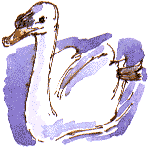 A Mute Swan drifts gracefully over to inspect us. He carries his left foot lifted onto his back. The delicate grey tracery over the webbing looks almost reptilian.
A Mute Swan drifts gracefully over to inspect us. He carries his left foot lifted onto his back. The delicate grey tracery over the webbing looks almost reptilian.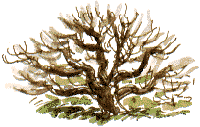 An ancient Black Mulberry stands in front of the soon to be restored hulk of Hatfeild Hall, near another local nature reserve, Stanley Marsh. Mulberries were planted about 200 years ago in a drive to create a British silk industry. Unfortunately the leaves of the Black variety are not a suitable food for the silkworm larvae.
An ancient Black Mulberry stands in front of the soon to be restored hulk of Hatfeild Hall, near another local nature reserve, Stanley Marsh. Mulberries were planted about 200 years ago in a drive to create a British silk industry. Unfortunately the leaves of the Black variety are not a suitable food for the silkworm larvae.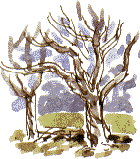
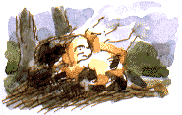 One ivy-covered tree (a sycamore?) has reached the end of its life. 'Was that the woodpecker tree?' a dogwalker asks the golf course groundsman.
One ivy-covered tree (a sycamore?) has reached the end of its life. 'Was that the woodpecker tree?' a dogwalker asks the golf course groundsman.Out on the course thousands of whips (young saplings) have been planted, but, until they become established, the scene resembles a post glacial landscape, with little drumlins and kettle hole ponds created to add challenge and visual appeal for the players.
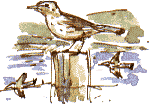 Twenty Fieldfare by the river. In the low, bright sunlight they become designer thrushes, taking the traditional spotty theme and developing it with patches of warm grey and darker bands.
Twenty Fieldfare by the river. In the low, bright sunlight they become designer thrushes, taking the traditional spotty theme and developing it with patches of warm grey and darker bands. This morning, the rain-lashed car park of 'Toys'R'Us' was enlivened by the mincing gait of a Pied Wagtail.
This morning, the rain-lashed car park of 'Toys'R'Us' was enlivened by the mincing gait of a Pied Wagtail.Richard Bell,
wildlife illustrator
E-mail;'richard@daelnet.co.uk'